Nucor posts $830/ton spot HR price for week of April 8
Nucor said its spot hot-rolled (HR) coil price this week will be $830 per short ton (st).
Nucor said its spot hot-rolled (HR) coil price this week will be $830 per short ton (st).
They say all’s fair in love and war. But that doesn’t seem to be the case in steel. Being deemed “unfair” could get you slapped with shiny new Section 232 tariffs these days. Then again, “unfair” implies a judge. And people on opposing sides seldom agree with the judgment. Such seems to be the current case between the US and Mexico.

The Biden Commerce Department just issued a broad rewrite of regulations dealing with a host of antidumping and countervailing duty issues. This week, I write about one of those issues, where it looks like Commerce made a wrong turn.
April scrap prices came in sideways in the US, sources told SMU.

Mercury Resources CEO Anton Posner will be the featured speaker on SMU’s next Community Chat webinar on Wednesday, April 10, at 11 a.m. ET. The live webinar is free. You can register here. A recording of the webinar and the slide deck will be available only for SMU members.
Sheet prices continue to inch higher. That’s a welcome development for many. But it’s also a far cry from the price surge many predicted about a month ago. Remember the theory that supported a spring surge: Sheet prices would soar on a combination of mill outages, stable-to-strong demand, restocking, mill price increases, and (potentially) trade action against Mexico as well.
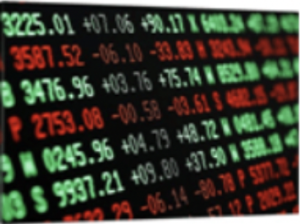
It has been six weeks since Flack Global Metals wrote our last SMU column, and if you simply look at the futures curve from then (blue) until now (white), you could argue that very little has changed.
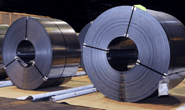
The US Department of Commerce’s International Trade Administration (ITA) has revised upwards the antidumping duty (AD) rates on imports of cold-rolled steel flat products from two South Korean producers.

A prominent US senator has asked the White House to investigate Nippon Steel Corp.’s (NSC) ties to China as the Japanese steelmaker seeks to acquire U.S. Steel.
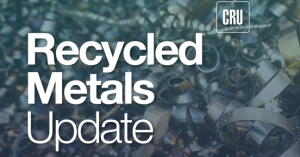
On the eve of the April ferrous scrap buy, there is no firm consensus on the market’s direction. The safe predictions are “soft” sideways to “strong” sideways. That may mean down $10 per gross ton (gt) to up $10/gt.
Cleveland-Cliffs’ Lourenco Goncalves said the company is still interested in acquiring U.S. Steel, though no bid is currently on the table, according to a local report.
There is growing hope that the US scrap market has bottomed, according to industry sources. The steep price declines in March may have ushered in a floor because dealers say their stocks are a bit depleted. Their concern: that the flow of obsoletes could be cut severely with any further drop in prices. Is this wishful thinking, or do the fundamentals support the prediction of a market bottom? Let’s take a look!
Steel companies in Mexico have lined up capex plans totaling $5.7 billion in the next three years. The focus is on replacing imports with domestic production, said David Gutierrez, outgoing president of sector association Canacero. “The investments are aimed at reducing imports, strengthening national production, and ensuring that the benefits stay in the country,” he was quoted as saying at Canacero’s annual congress by regional news service Business News Americas.
I can’t really define “Bidenomics” because it is so filled with contradictions. It seems to aim to increase manufacturing output in the United States. But not all increases are created equal.
SMU’s sheet prices firmed up modestly this week, even as CME hot rolled futures declined. What gives? My channel checks suggest that demand remains stable and that buyers have returned to the market following new HR base prices announced by mills earlier this month. I’m looking forward to seeing whether lead times, which have stabilized, will start extending. SMU will have more to share on that front when we release updated lead time figures on Thursday. As for HR futures, what a reversal! As David Feldstein wrote last Thursday, bulls expected mill price increase announcements. And we briefly saw the May contract climb as high as ~$1,000 per short ton (st).

Mercury Resources CEO Anton Posner will be the featured speaker on SMU’s next Community Chat webinar on Wednesday, April 3, at 11 am ET. The live webinar is free. You can register here. A recording of the webinar and the slide deck are available only SMU members.
As the month of March goes into the second half, the scrap community is trying to cope with the large drop in ferrous scrap earlier this month.

2024 started with a $200 per short ton (st), one-week demon drop in the CME Midwest hot-rolled (HR) coil futures. Then, HR futures consolidated in the low $800s/st with the April future trading to as low as $770/st as the curve shifted into contango or upward sloping. A big move was expected, and a big […]
SMU’s price for hot-rolled (HR) inched lower this week. I wouldn’t be surprised, however, if we start to see prices and lead times move higher in the weeks ahead. The modest declines in HR this week are probably the result of lingering deals cut at “old” prices, as sometimes happens after mill price increases. But those deals will probably be out of the market soon if they aren’t already. So why do I float the idea of higher prices? Some big buys have been placed. It reminds me a little of what we saw last fall, when people restocked in anticipation of higher prices once the UAW strike was resolved.
Sheet and plate prices mostly moved lower this week after little change was noted the week prior. Despite edging down, sentiment is mixed, and many suggest a bottom may be near.

Across industries and nations, it’s clear sustainability is the path towards the future. Moving ahead means creating dialogue and building bridges. For Nucor, building bridges means reaching out to new audiences. Actually, it also literally means soon building bridges from the plate made at its Brandenburg mill in Kentucky.
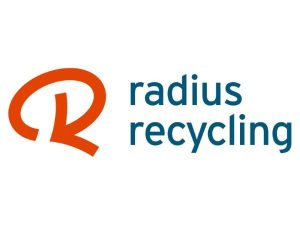
Radius Recycling anticipates a wider loss in its fiscal second quarter vs. the first quarter, according to preliminary results.

Happy St. Patrick’s Day. “To govern is to choose.” Those words, reportedly first uttered by the late French Premier Pierre Mendes-France in the 1950s, resonate vividly in our time. It means that choices have consequences and that priorities must be set based on goals. Interested parties, in and out of government, raise their voices in […]

The ferrous scrap market experienced a sharp decline for March shipments. Prime scrap fell $60-70 per gross ton (gt) while shredded and other obsolete grades declined $40-50/gt. It seems these prices were accepted in the trade by dealers across the continent.

US senators have introduced the "Stop Mexico’s Steel Surge Act," which seeks to reimpose 25% Section 232 tariffs on Mexican steel imports.
US steel exports jumped to 770,649 short tons (st) in January, rising 25% from the 12-month low recorded one month prior.
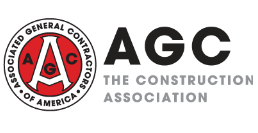
The construction sector added 23,000 jobs in February, boosted by nonresidential, according to the Associated General Contractors of America (AGC).
Reaction to the price announcements last week by domestic mills varied just a little depending on who you were speaking to. I heard rumblings before the announcements that a price hike of $100 per short ton (st) was coming. After the announcements were made, I had some questions as to whether they were increases at all.

In 2023, Mexico emerged as the largest trading partner with the United States—larger than Canada, and even China. The growth in trade with Mexico has been truly historic—Mexico has never captured the title of the largest exporter to the US. At $475 billion for the year, the value of US imports from Mexico exceeded that […]
A weak start for sheet demand this year has continued to weigh on global prices. European demand outside of the renewable energy sector was weak enough that market participants said mills are likely to cut output further after several furnace restarts earlier in the year. In China, demand has also failed to pick up after recent holidays, and even government announcements of more stimulus measures during the country’s “Two Sessions” meetings failed to boost market confidence.